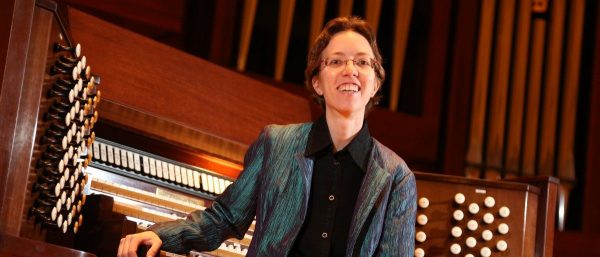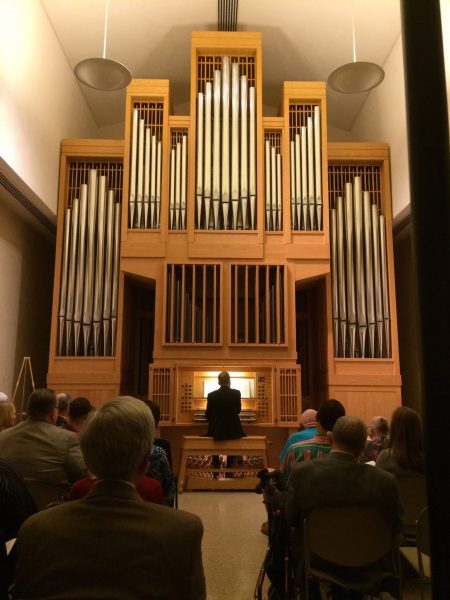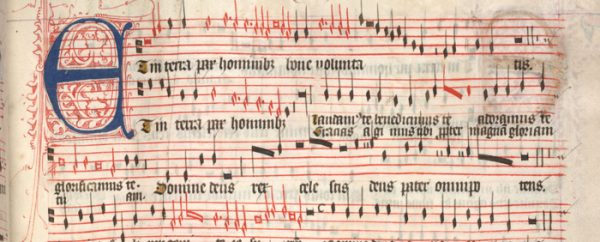Study With
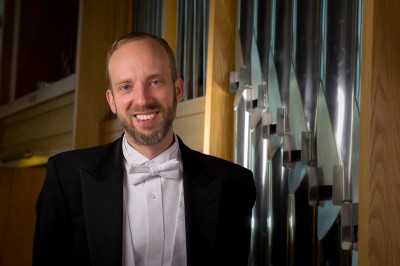
Joel Bacon
- Professor of Music
- Stewart and Sheron Golden Chair in Organ and Liturgical Studies
- Fr. Don Willette Chair of Catholic Studies
Overview
Organ students at Colorado State University have an opportunity to perform on the world-famous Casavant organ. Since its installation in 1968, the Casavant organ has gained international fame as one of the 25 greatest organs in the world (Anton Heiller, 1968). Built in the North German tradition, CSU's Casavant is among the world's most beautifully balanced and well-voiced organs.
In addition to practice and lesson time on the Casavant, organ students, through an arrangement with local churches, have access to practice and lesson times on three other exemplary organs in Fort Collins:
- The Phelps organ at St. Luke's Episcopal Church
- The Marcussen & Son organ at First United Methodist Church
- The Allen Digital organ at the American Baptist Church.
Harpsichord students practice and take lessons on one of the department's two instruments:
- Built in 2022 by Bruce Kennedy, whose workshop in Tuscany produces world-famous harpsichords, the instrument is a German double-manual (after M. Mietke, 1702-1704), capable of playing a range of keyboard music, but especially that of J.S. Bach.
- A two-manual, three-choir instrument built by Dennis Brown (1982) to the specifications of Taskin, the great French harpsichord builder to the Louis at Versailles.
Liturgical Studies is a course of study that complements the degree program of an undergraduate or graduate music student interested in church music. It is also designed to provide continuing education to professional musicians in the community. The program seeks to offer theory and history of liturgical music together with applied music lessons and practical training for church music careers.
Audition Requirements
Undergraduate Audition (all degrees)
-
Two pieces: one from the German Baroque (a prelude/fugue or chorale prelude by Bach, Buxtehude, Bruhns, etc.), and a contrasting piece from the Romantic or Contemporary repertoire (for example, a Mendelssohn sonata movement, Brahms chorale prelude, piece by Langlais, etc.)
-
Sight reading: a hymn
Graduate Audition
Prospective graduate students should be prepared to play a work (or representative movements) from each of the following categories. Additionally, a chorale prelude from the Baroque period, as well as a short lyric work composed after 1800 should be prepared.
- Before 1750 (not Bach) — Examples: a Buxtehude free work; a set of variations by Sweelinck; a French Classic suite or Noël
- J.S. Bach — Examples: a large Prelude, Toccata, or Fantasy and Fugue (such as BWV 532, 542, 544, etc.); a trio sonata; Passacaglia; etc.
- Romantic — Examples: a Mendelssohn sonata; representative movements or chorale fantasies by Reger; representative movements of a French organ symphony (Guilmant, Widor, Vierne)
- Post-Romantic and Contemporary — Examples: large movements by Messiaen (from La Nativité, L’Ascension, etc.); a sonata by Hindemith; a partita by Distler; pieces or movements by contemporary composers such as Hakim, Guillou, Rorem, Paulus, Hambraeus, etc.
Organ Events
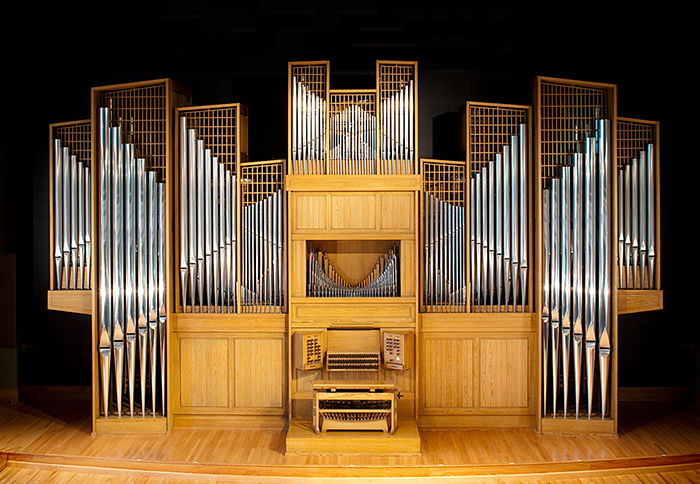
2025 CSU Organ Week
Organ News
Baylor Organist Helps Realize Donors’ Musical Dream
By Brandon Adams Emeritus Professor Robert Cavarra dreamt of having the world’s greatest organists visit Colorado State to perform and share their expertise and passion for knowledgeable audiences. While he was a professor here, he invited world renowned artists such as Marie-Claire Alain, Luigi Tagliavini, Gillian Weir, E. Power Biggs, and Anton Heiller to play […]
February 2016 Faculty Notes
Last fall, Music Education Professor Dr. Bonnie Jacobi, had her research published The Journal of Historical Research in Music Education. Her article titled “In Burst of Fresh Song” – William Churchill Hammond and His Christmas Caroling Choir at Mount Holyoke College explains how he not only helped to reinstate the musical celebration of Christmas after […]
Medieval Music Concert is a Rare Experience
Unique: a word we use so often that perhaps we sometimes forget what it means. An adjective meaning the only one of its kind, or unlike anything else, we could interchangeably use words like distinct, individual, and special. On Nov. 10, Dr. Joel Bacon, Chair of Organ and Liturgical Studies and associate professor of Organ […]
Guest Artists
Guest Artist and Poster Gallery
Phelps Collection
(1923-1999; bulk 1947-1999) Recognized for combining the historic art of organ building with modern mechanical design, Lawrence Phelps designed and supervised the construction of more than 800 organs, including organs at Colorado State University and at St. Luke's Episcopal Church in Fort Collins. The Phelps Collection consists of articles, speeches, correspondence, design notes, tools and parts and biographical materials. The Phelps collection is held at the Morgan Library, please visit lib2.colostate.edu/archives


